
Famed Monty Python actor, Michael Palin, once said, “I am not a great cook, I am not a great artist, but I love art, and I love food, so I am the perfect traveler.” Here are 15 amazing dishes from around the world, as well as a link to a recipe so you can try making it yourself. Some recipes are easy, some are more intensive, and others are for only the bravest culinary adventurers. But all of them are guaranteed to transport you to faraway lands, new cultures, and most importantly, help you experience delicious culinary delights!
Margherita Pizza
Italy

Margherita Pizza (Photo: Marian Weyo)
Legend has it that a pizza maker invented the Margherita pizza in the late 1800s to honor the Queen of Italy, Margherita of Savoy. The pizza is known for its trifecta of fresh ingredients (tomatoes, mozzarella, and basil) which are said to represent the unification of Italy. Tomatoes (red), mozzarella (white), and basil (green) turned the pizza into a symbol of the Italian flag.
However, recent scholars have discovered that a similar pizza was already popular in Italy since the late 1700s. Whatever the true origin is, the deliciousness and simplicity of this pizza can’t be denied. It’s also an excellent way for novice cooks to create an elegant dinner. Simply finish with salt and a drizzle of extra virgin olive oil and you’re ready to feast!
Get the recipe here.
Pavlova
Australia & New Zealand
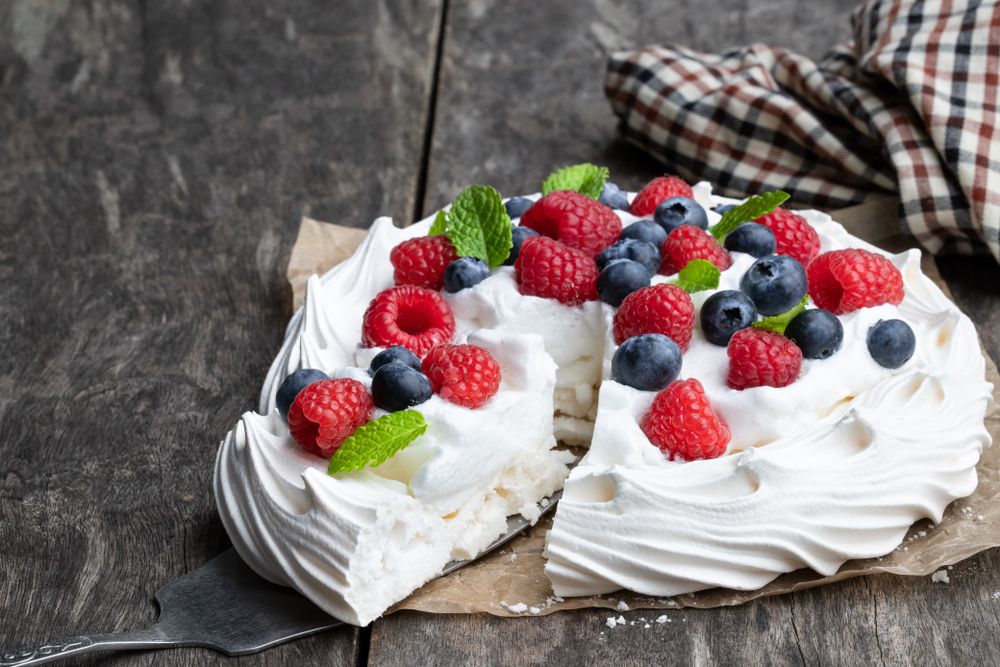
Pavlova (Photo: Elena Zajchikova)
Who created the pavlova, Australia or New Zealand? This is a hotly contested argument and both nations claim to be the birthplace of the famous meringue dessert. Despite the varying claims, here’s what we do know: The dessert originated in the 1920s and was named after the Russian ballet dancer, Anna Pavlova.
The story goes that a hotel in New Zealand’s capital of Wellington was inspired by Pavlova’s tutu and created a dessert to look as fanciful as it did. Another story states that it was actually a hotel in Perth, Australia and that it was named after her when a patron took a bite and declared the dish to be “light as Pavlova.” Regardless of its origin, it’s a delicious and truly unique dessert.
Get the recipe here.
Nasi Lemak
Malaysia
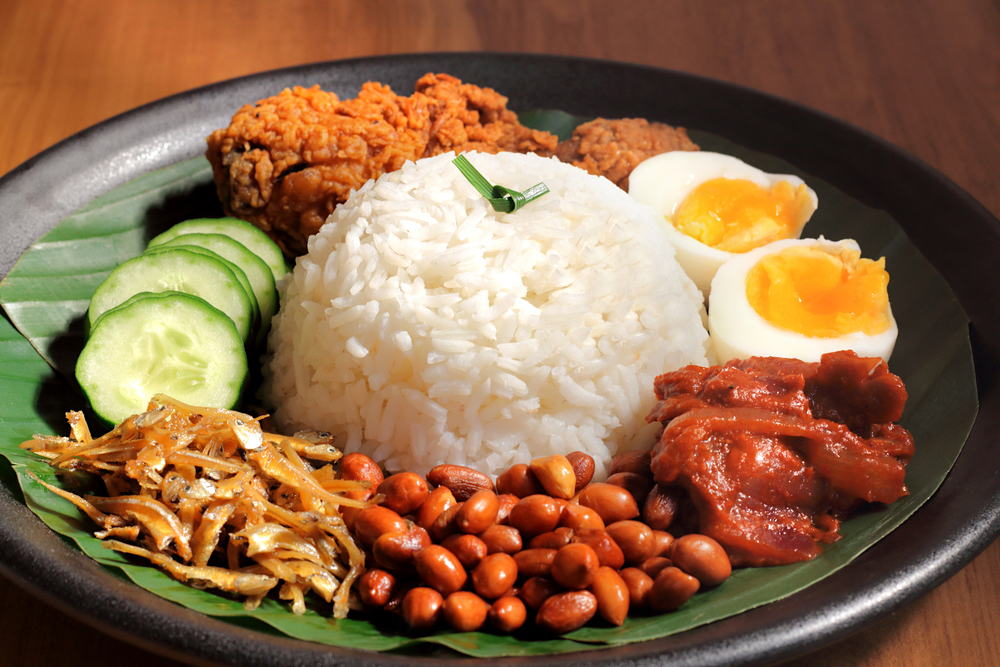
Nasi Lemak (photo: Dolphfyn)
Nasi lemak is the national dish of Malaysia, and literally translated, means “rich rice”, which is a reference to the rich coconut milk the rice is cooked in. The fragrant, hearty rice is then surrounded by a buffet of accompaniments, like curried or fried chicken; cucumbers; egg; fried anchovies; and sambal, a delicious Malaysian chili marmalade.
The dish itself varies throughout different parts of Southeast Asia. Because of Malaysia’s diverse population, there’s a Chinese, Indian, and halal version of the dish. There’s also variations in the Singaporean version, as well as the Indonesian version. You could travel around the country eating only nasi lemak and have a different dish each time.
Get the recipe here.
Chicken Rice
Singapore
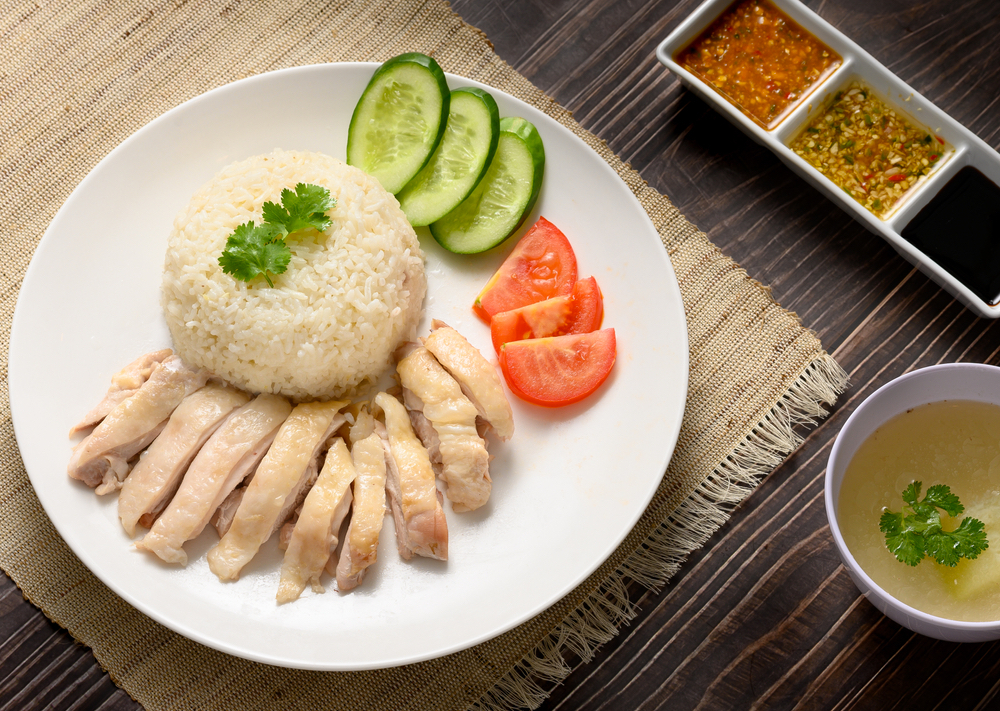
Singaporean Chicken Rice (photo: Bank09)
While Singapore has its own version of nasi lemak, the nation’s true claim to fame is chicken rice. The dish gets its name from (obviously) the chicken and the rice. First, a whole chicken is cooked in boiling water. Then, after the chicken is removed from the pot, rice is added and is cooked in the flavorful chicken juices. To serve, the chicken is sliced and garnished with cucumber. Three dipping sauces are presented as well: chili, ginger and garlic, and a thick, dark-colored sesame soy sauce. Then, a bowl of rice is served alongside. It’s a meal that will always leave you coming back for more.
Get the recipe here.
Fish and Chips
England
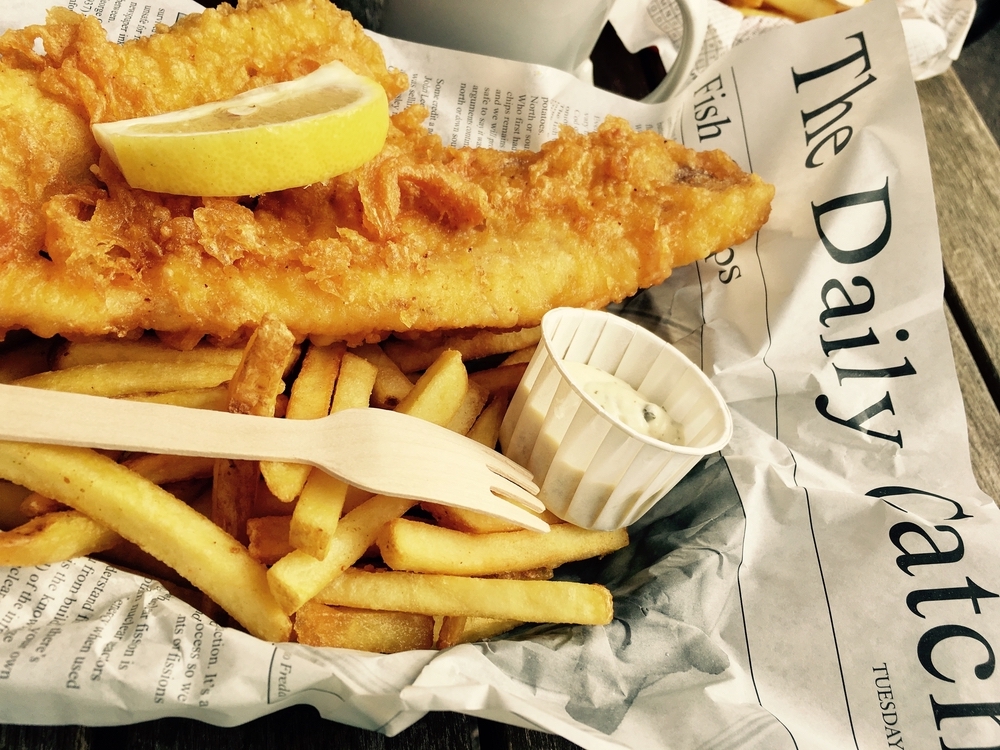
Fish and chips (Photo: Andreea Tudor)
While England may not be known for its cuisine, it has created one extremely famous dish: fish and chips. The combo dates back to the mid-1800s and was a staple for the working class. Hearty and filling, it was sure to keep workers full until they went home for dinner.
Back in the day, fish and chips would be served wrapped in day-old newspapers (an easy way for takeaway shops to save money on supplies) and some shops still continue that practice to this day. Another interesting fact is that Alfred Hitchcock’s parents owned a fish and chips shop… which could explain his disdain for seagulls.
Get the recipe here.
Stroopwafel
The Netherlands
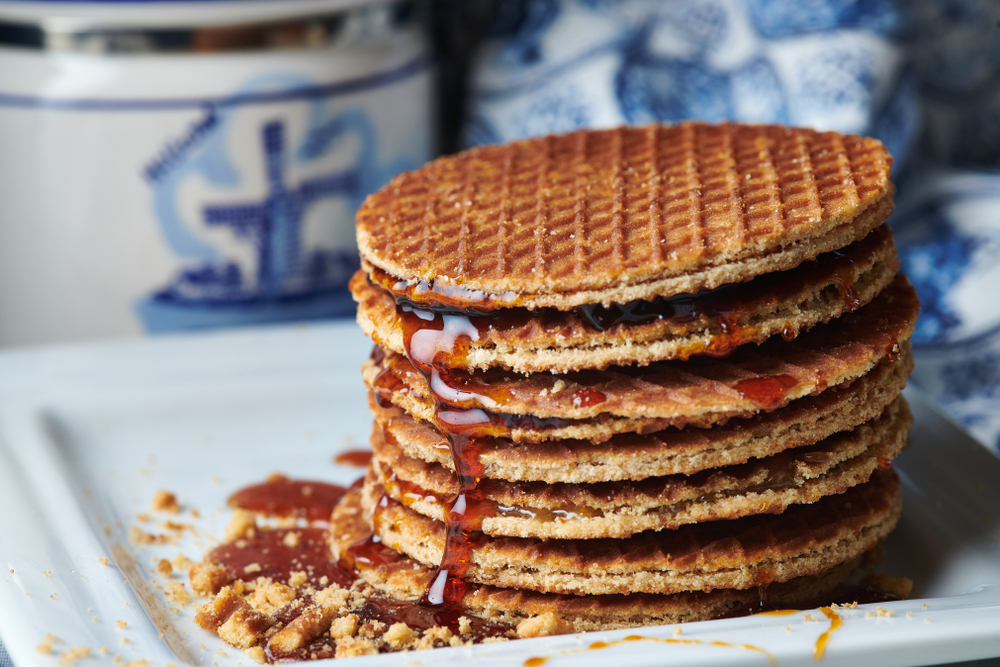
Stroopwafel (Photo: Studio vanDam)
A stroopwafel is made of two thin waffles pressed together with a layer of filling inside, traditionally a caramel. Stroopwafels are often served alongside tea and coffee. The stroopwafel is placed atop the mug, which both keeps the drink hot while also softening the waffle and caramel inside.
Interestingly enough, the origins of the stroopwafel lead back to the Dutch town of Gouda, which is famous for another culinary delight, gouda cheese. Because of Gouda’s proximity to Rotterdam, it’s a popular day-trip destination for travelers looking to taste Dutch cuisine. Visitors should definitely add stroopwafels to their must-eat list.
Get the recipe here.
Chilaquiles
Mexico
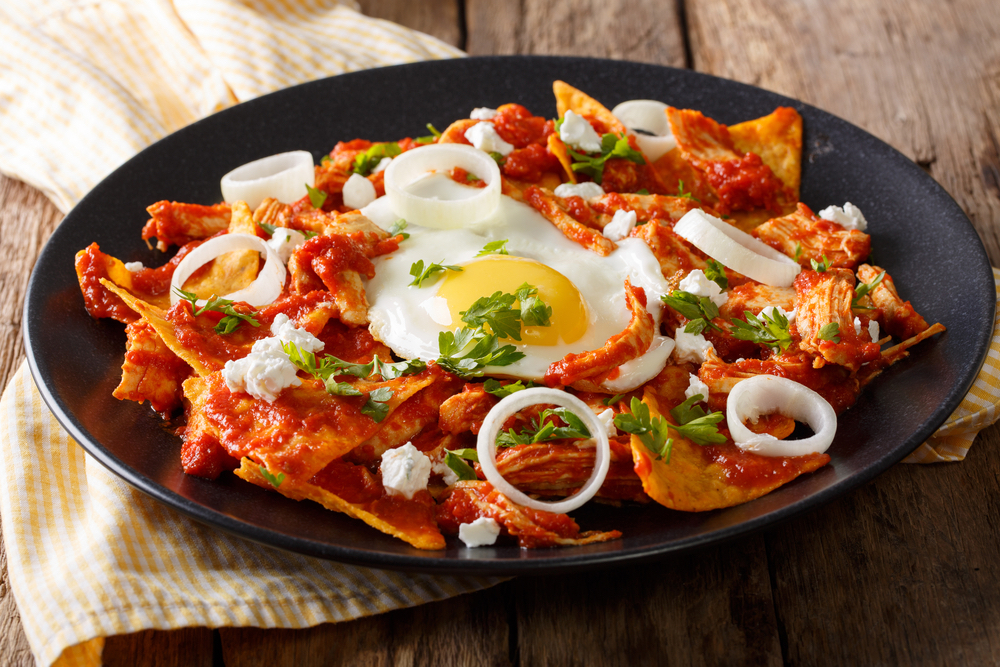
Chilaquiles (photo: AS Food studio)
Chilaquiles is a bright and vibrant breakfast dish in Mexico. Fried tortillas are simmered in salsa and then topped with crema, queso fresco, onion, and avocado. Sometimes, shredded chicken or a fried egg are even added to the mix.
This is an excellent dish for novice cooks as it can have so many variations. In fact, I bet most of you already have tortilla chips, cheese, and onion already in your kitchen. And this is no coincidence, it’s believed that chilaquiles originated as a way for mothers to use up leftover tortillas and salsa. You can even challenge yourself by creating your own unique version of the dish using whatever ingredients are currently in your fridge!
Get the recipe here.
Poutine
Canada
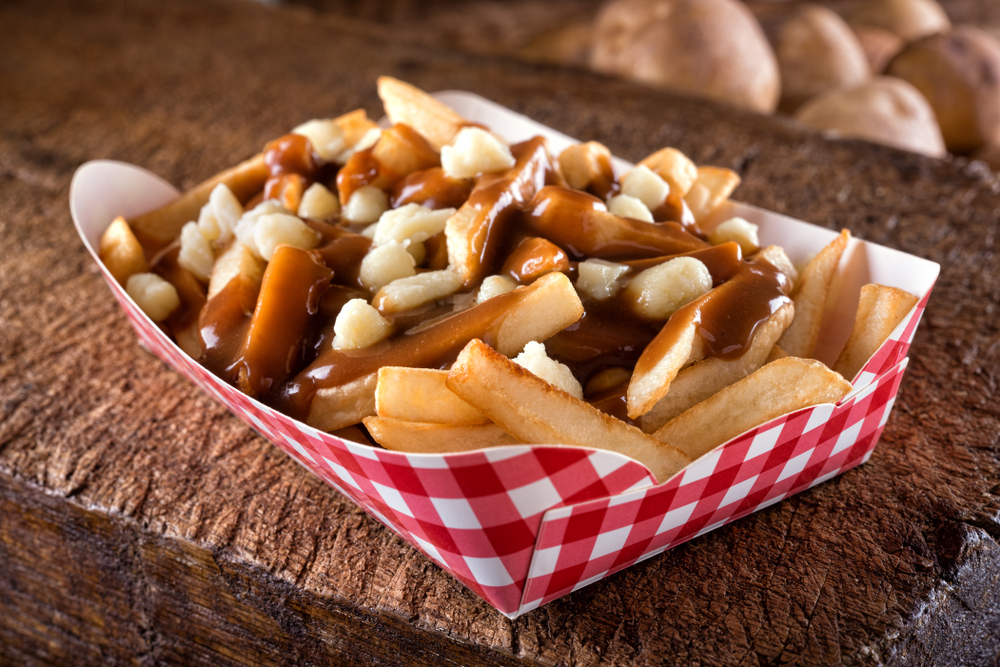
Poutine (Photo: Foodio)
Poutine, sometimes called “Canada’s national dish”, originated in southern Quebec in the late 1950s. The dish is made up of French fries and cheese curds topped with brown gravy. It was originally served at diners, pubs, and sporting events, giving poutine the reputation of being something consumed by the working class after a night of heavy drinking.
However, in the 2000s Canadian chefs began adding poutine to their menus, using fresh ingredients and even putting their own spin on the dish, such as adding duck or using sweet potatoes. Since then, the dish has skyrocketed in popularity and is now the beloved hallmark of Canadian cuisine.
Get the recipe here.
Pad Thai
Thailand
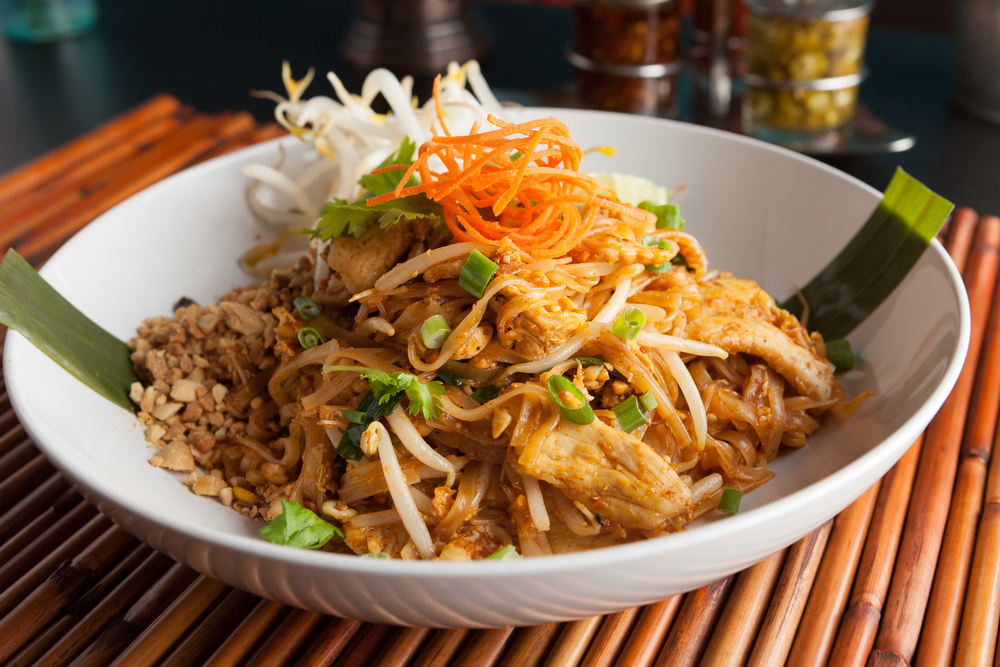
Pad Thai (ARENA Creative)
Surprisingly, pad Thai isn’t steeped in history or lore, but is actually quite modern. Scholars date the dish back to the late 1930s when Thai Prime Minster, Plaek Pibulsonggram, wanted to help build a national identity for the country. It’s also believed that the noodle dish was helpful during WWII as a way to encourage citizens to eat noodles instead of rice since rice production was being hindered by the war. The result is one of the most delicious dishes anywhere on the planet.
Rice noodles are stir-fried with egg, tamarind sauce, fish sauce, scallion, chilis, shrimp, and more. Peanuts are traditionally served on the side and bean sprouts are sprinkled on top. It’s a complete, delicious, and nutritious meal that’s been winning over foodies around the world for decades. Despite the number of ingredients, pad Thai doesn’t have to be daunting, so why not try making your own with this easy-to-follow recipe?
Get the recipe here.
Peking Duck
China
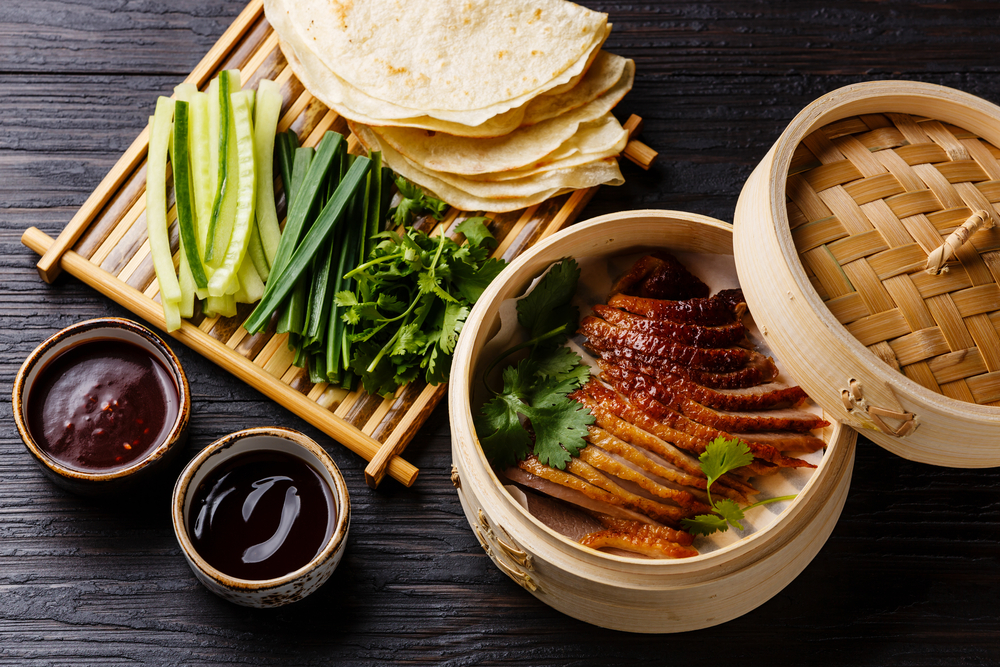
Peking duck (Photo: Natalia Lisovskoya)
Peking Duck is a traditional Chinese dish with a very long history, dating back to the imperial era. It’s renowned for flavorful, crispy duck skin and the tender meat beneath. The duck can also be served with scallion, cucumber, and tianmian sauce, all of which gets wrapped in a rice pancake. It’s a positively delicious meal that can, surprisingly, be easily made at home.
You can find Chinese marts and restaurants that will sell you a prepared Peking Duck. You can then buy the scallion and cucumber, and while tianmian sauce may be difficult to find, the similar hoisin sauce is sold at even the most mainstream grocery chains. You could even prepare crepes at home to substitute for the rice pancake.
Get the recipe here.
Pão de Queijo
Brazil
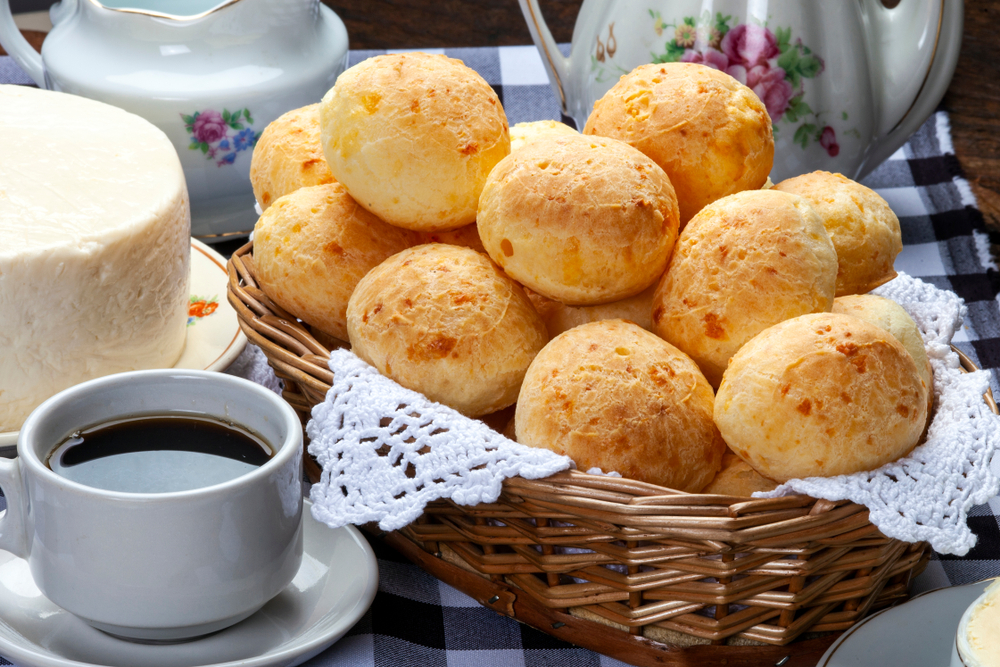
Pão de Queijo (Photo: Rocharibeiro)
Pão de queijo, or “cheese bread” in Portuguese, is a famous Brazilian dish served at breakfast, or as a snack throughout the day. The “bread” is a mixture of cassava starch, cheese, egg, and seasoning. Because there’s no real flour in the mixture, the bread is slightly chewy and deliciously savory.
In recent years, pão de queijo has boomed in popularity around the world and can now be found in Brazilian cafes globally. Some grocery stores even sell the cheese bread in the frozen food aisle. To eat, they’re normally paired with something sweet like fresh fruit, along with a hot cup of coffee or tea.
Get the recipe here.
Injera
Ethiopia, Eritrea & Somalia
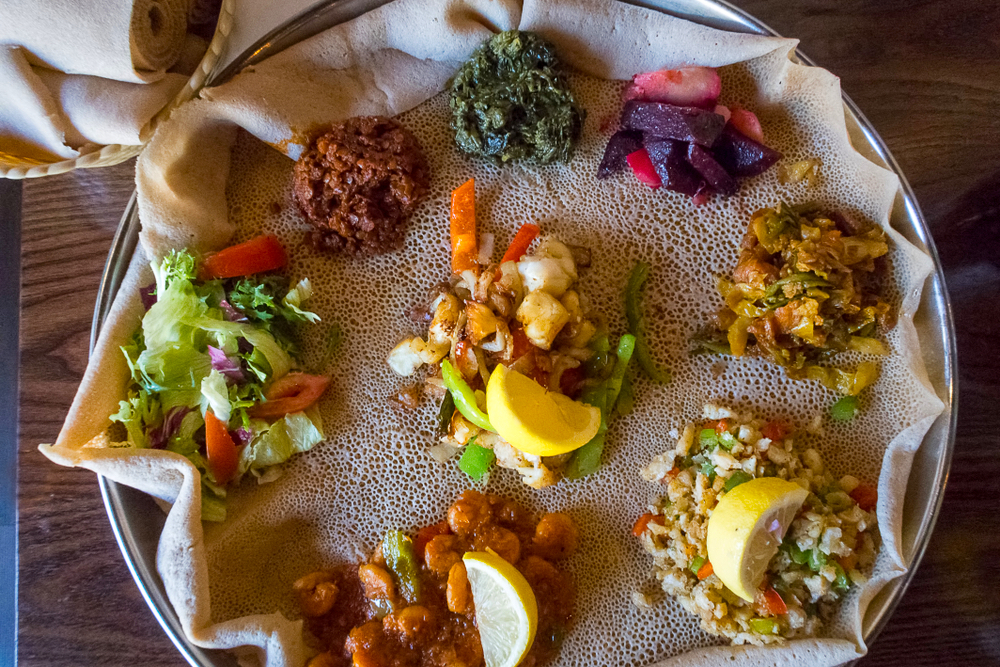
Injera (Photo: Magic Bones)
Injera is a delicious, fluffy, almost spongey bread traditional in East Africa. It’s made using teff seeds that are ground down to a flour and mixed with water. Some people mix in wheat or barley as well. The mixture then has ersho added to it, which acts like a sourdough starter and ferments the dough. It sits for two or three days and is then poured over a hot skillet, creating giant pan-sized bread rounds.
Traditionally, it’s served alongside wat, which is like a thick stew made of meats, vegetables, or both. Think of wat as a really, really thick curry. But injera is positively scrumptious and can be a wonderful accompaniment to numerous kinds of soups, stews, curries, and even hummus.
Get the recipe here.
Ratatouille
France

Ratatouille (Photo: Oksana Mizina)
France has tons of popular dishes, but none have experienced the renaissance that ratatouille has. The dish, which is made by simmering vegetables with seasonings, was once seen as a commoner’s meal. It was a way for mothers to use up their going-bad vegetables or to mask the flavor of low-quality produce. For ratatouille, veggies like eggplant, bell pepper, and zucchini are all simmered with tomatoes. The mixture is then seasoned with fennel, basil, bay leaf, and thyme.
Thanks to the 2007 Disney film of the same name, ratatouille received a massive boom in popularity and respect. Before long, top-tier restaurants around the world were adding artisan versions of ratatouille to their menus. The dish has come a long way from its humble origins, and is also a great way to get kids to eat vegetables.
Get the recipe here.
Spanakopita
Greece
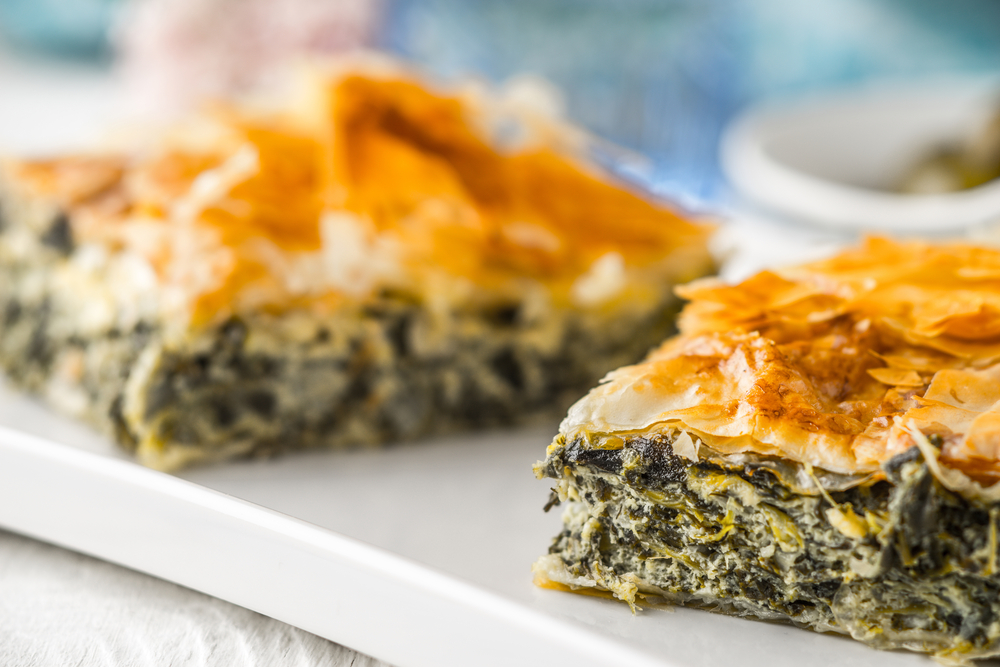
Spanakopita (Photo: Karpenkov Denis)
Similar to the way baklava is made, spanakopita is created using thin layers of phyllo dough. However, whereas baklava fills each layer with sweets, spanakopita takes a savory approach. Between the layers of dough, spinach and cheese are delicately placed, along with egg and onion.
This is a really fun dish for at-home cooks to try out. Something about the gorgeous contrast of green spinach and golden phyllo dough makes spanakopita look like it took hours of preparation and baking. But in reality, it’s quite easy!
Get the recipe here.
Gazpacho
Spain
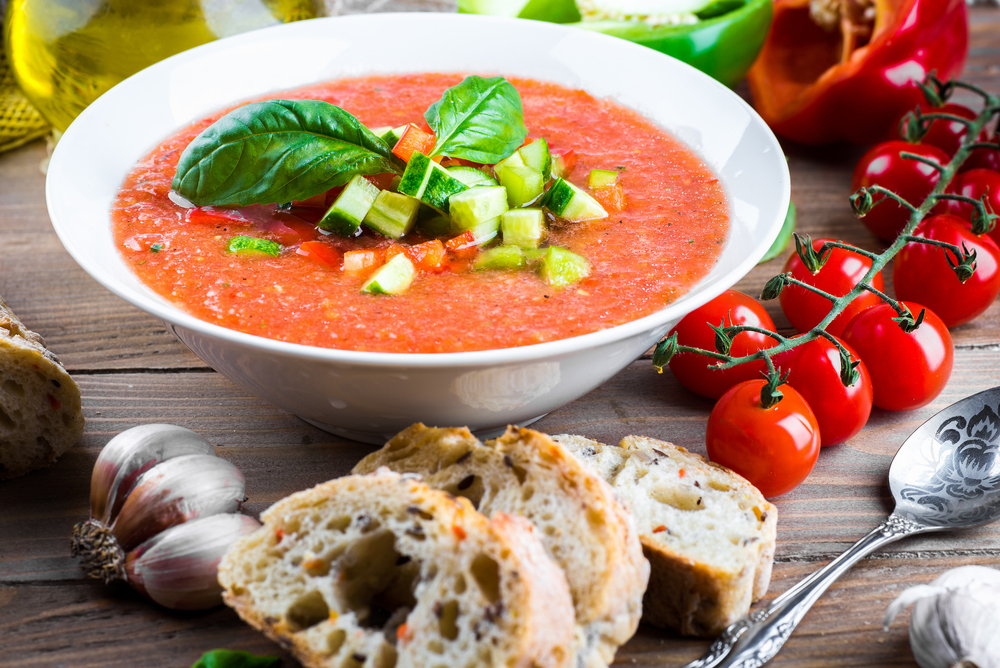
Gazpacho (Photo: Seqoya)
Gazpacho, which originated in southern Spain, is the perfect way to beat the heat of a Mediterranean summer. This cold soup is made from blending together tomatoes, cucumber, and onions with a variety of spices and olive oil. It also pairs perfectly with a fresh loaf of bread or pita. Simply dip into the soup and enjoy!
Gazpacho is also a fun way to shake up a stagnant meal routine. A cold soup (especially on a hot day) is a quick, easy, and tasty way to cool down. Plus, with all the vegetables, this soup is a nutritional powerhouse, with ample amounts of vitamin C and vitamin A.
Get the recipe here.
You may also like:
Avocadoes: More Than Just Guacamole
The post 15 International Dishes and Their Recipes! appeared first on Passport Magazine.
15 International Dishes and Their Recipes!
Famed Monty Python actor, Michael Palin, once said, “I am not a great cook, I am not a great artist, but I love art, and I love food, so I am the perfect traveler.” Here are 15 amazing dishes from around the world, as well as a link to a recipe so you can try making it yourself. Some recipes are easy, some are more intensive, and others are for only the bravest culinary adventurers. But all of them are guaranteed to transport you to faraway lands, new cultures, and most importantly, help you experience delicious culinary delights!
Margherita Pizza
Italy

Margherita Pizza (Photo: Marian Weyo)
Legend has it that a pizza maker invented the Margherita pizza in the late 1800s to honor the Queen of Italy, Margherita of Savoy. The pizza is known for its trifecta of fresh ingredients (tomatoes, mozzarella, and basil) which are said to represent the unification of Italy. Tomatoes (red), mozzarella (white), and basil (green) turned the pizza into a symbol of the Italian flag.
However, recent scholars have discovered that a similar pizza was already popular in Italy since the late 1700s. Whatever the true origin is, the deliciousness and simplicity of this pizza can’t be denied. It’s also an excellent way for novice cooks to create an elegant dinner. Simply finish with salt and a drizzle of extra virgin olive oil and you’re ready to feast!
Get the recipe here.
Pavlova
Australia & New Zealand

Pavlova (Photo: Elena Zajchikova)
Who created the pavlova, Australia or New Zealand? This is a hotly contested argument and both nations claim to be the birthplace of the famous meringue dessert. Despite the varying claims, here’s what we do know: The dessert originated in the 1920s and was named after the Russian ballet dancer, Anna Pavlova.
The story goes that a hotel in New Zealand’s capital of Wellington was inspired by Pavlova’s tutu and created a dessert to look as fanciful as it did. Another story states that it was actually a hotel in Perth, Australia and that it was named after her when a patron took a bite and declared the dish to be “light as Pavlova.” Regardless of its origin, it’s a delicious and truly unique dessert.
Get the recipe here.
Nasi Lemak
Malaysia

Nasi Lemak (photo: Dolphfyn)
Nasi lemak is the national dish of Malaysia, and literally translated, means “rich rice”, which is a reference to the rich coconut milk the rice is cooked in. The fragrant, hearty rice is then surrounded by a buffet of accompaniments, like curried or fried chicken; cucumbers; egg; fried anchovies; and sambal, a delicious Malaysian chili marmalade.
The dish itself varies throughout different parts of Southeast Asia. Because of Malaysia’s diverse population, there’s a Chinese, Indian, and halal version of the dish. There’s also variations in the Singaporean version, as well as the Indonesian version. You could travel around the country eating only nasi lemak and have a different dish each time.
Get the recipe here.
Chicken Rice
Singapore

Singaporean Chicken Rice (photo: Bank09)
While Singapore has its own version of nasi lemak, the nation’s true claim to fame is chicken rice. The dish gets its name from (obviously) the chicken and the rice. First, a whole chicken is cooked in boiling water. Then, after the chicken is removed from the pot, rice is added and is cooked in the flavorful chicken juices. To serve, the chicken is sliced and garnished with cucumber. Three dipping sauces are presented as well: chili, ginger and garlic, and a thick, dark-colored sesame soy sauce. Then, a bowl of rice is served alongside. It’s a meal that will always leave you coming back for more.
Get the recipe here.
Fish and Chips
England

Fish and chips (Photo: Andreea Tudor)
While England may not be known for its cuisine, it has created one extremely famous dish: fish and chips. The combo dates back to the mid-1800s and was a staple for the working class. Hearty and filling, it was sure to keep workers full until they went home for dinner.
Back in the day, fish and chips would be served wrapped in day-old newspapers (an easy way for takeaway shops to save money on supplies) and some shops still continue that practice to this day. Another interesting fact is that Alfred Hitchcock’s parents owned a fish and chips shop… which could explain his disdain for seagulls.
Get the recipe here.
Stroopwafel
The Netherlands

Stroopwafel (Photo: Studio vanDam)
A stroopwafel is made of two thin waffles pressed together with a layer of filling inside, traditionally a caramel. Stroopwafels are often served alongside tea and coffee. The stroopwafel is placed atop the mug, which both keeps the drink hot while also softening the waffle and caramel inside.
Interestingly enough, the origins of the stroopwafel lead back to the Dutch town of Gouda, which is famous for another culinary delight, gouda cheese. Because of Gouda’s proximity to Rotterdam, it’s a popular day-trip destination for travelers looking to taste Dutch cuisine. Visitors should definitely add stroopwafels to their must-eat list.
Get the recipe here.
Chilaquiles
Mexico

Chilaquiles (photo: AS Food studio)
Chilaquiles is a bright and vibrant breakfast dish in Mexico. Fried tortillas are simmered in salsa and then topped with crema, queso fresco, onion, and avocado. Sometimes, shredded chicken or a fried egg are even added to the mix.
This is an excellent dish for novice cooks as it can have so many variations. In fact, I bet most of you already have tortilla chips, cheese, and onion already in your kitchen. And this is no coincidence, it’s believed that chilaquiles originated as a way for mothers to use up leftover tortillas and salsa. You can even challenge yourself by creating your own unique version of the dish using whatever ingredients are currently in your fridge!
Get the recipe here.
Poutine
Canada

Poutine (Photo: Foodio)
Poutine, sometimes called “Canada’s national dish”, originated in southern Quebec in the late 1950s. The dish is made up of French fries and cheese curds topped with brown gravy. It was originally served at diners, pubs, and sporting events, giving poutine the reputation of being something consumed by the working class after a night of heavy drinking.
However, in the 2000s Canadian chefs began adding poutine to their menus, using fresh ingredients and even putting their own spin on the dish, such as adding duck or using sweet potatoes. Since then, the dish has skyrocketed in popularity and is now the beloved hallmark of Canadian cuisine.
Get the recipe here.
Pad Thai
Thailand

Pad Thai (ARENA Creative)
Surprisingly, pad Thai isn’t steeped in history or lore, but is actually quite modern. Scholars date the dish back to the late 1930s when Thai Prime Minster, Plaek Pibulsonggram, wanted to help build a national identity for the country. It’s also believed that the noodle dish was helpful during WWII as a way to encourage citizens to eat noodles instead of rice since rice production was being hindered by the war. The result is one of the most delicious dishes anywhere on the planet.
Rice noodles are stir-fried with egg, tamarind sauce, fish sauce, scallion, chilis, shrimp, and more. Peanuts are traditionally served on the side and bean sprouts are sprinkled on top. It’s a complete, delicious, and nutritious meal that’s been winning over foodies around the world for decades. Despite the number of ingredients, pad Thai doesn’t have to be daunting, so why not try making your own with this easy-to-follow recipe?
Get the recipe here.
Peking Duck
China

Peking duck (Photo: Natalia Lisovskoya)
Peking Duck is a traditional Chinese dish with a very long history, dating back to the imperial era. It’s renowned for flavorful, crispy duck skin and the tender meat beneath. The duck can also be served with scallion, cucumber, and tianmian sauce, all of which gets wrapped in a rice pancake. It’s a positively delicious meal that can, surprisingly, be easily made at home.
You can find Chinese marts and restaurants that will sell you a prepared Peking Duck. You can then buy the scallion and cucumber, and while tianmian sauce may be difficult to find, the similar hoisin sauce is sold at even the most mainstream grocery chains. You could even prepare crepes at home to substitute for the rice pancake.
Get the recipe here.
Pão de Queijo
Brazil

Pão de Queijo (Photo: Rocharibeiro)
Pão de queijo, or “cheese bread” in Portuguese, is a famous Brazilian dish served at breakfast, or as a snack throughout the day. The “bread” is a mixture of cassava starch, cheese, egg, and seasoning. Because there’s no real flour in the mixture, the bread is slightly chewy and deliciously savory.
In recent years, pão de queijo has boomed in popularity around the world and can now be found in Brazilian cafes globally. Some grocery stores even sell the cheese bread in the frozen food aisle. To eat, they’re normally paired with something sweet like fresh fruit, along with a hot cup of coffee or tea.
Get the recipe here.
Injera
Ethiopia, Eritrea & Somalia

Injera (Photo: Magic Bones)
Injera is a delicious, fluffy, almost spongey bread traditional in East Africa. It’s made using teff seeds that are ground down to a flour and mixed with water. Some people mix in wheat or barley as well. The mixture then has ersho added to it, which acts like a sourdough starter and ferments the dough. It sits for two or three days and is then poured over a hot skillet, creating giant pan-sized bread rounds.
Traditionally, it’s served alongside wat, which is like a thick stew made of meats, vegetables, or both. Think of wat as a really, really thick curry. But injera is positively scrumptious and can be a wonderful accompaniment to numerous kinds of soups, stews, curries, and even hummus.
Get the recipe here.
Ratatouille
France

Ratatouille (Photo: Oksana Mizina)
France has tons of popular dishes, but none have experienced the renaissance that ratatouille has. The dish, which is made by simmering vegetables with seasonings, was once seen as a commoner’s meal. It was a way for mothers to use up their going-bad vegetables or to mask the flavor of low-quality produce. For ratatouille, veggies like eggplant, bell pepper, and zucchini are all simmered with tomatoes. The mixture is then seasoned with fennel, basil, bay leaf, and thyme.
Thanks to the 2007 Disney film of the same name, ratatouille received a massive boom in popularity and respect. Before long, top-tier restaurants around the world were adding artisan versions of ratatouille to their menus. The dish has come a long way from its humble origins, and is also a great way to get kids to eat vegetables.
Get the recipe here.
Spanakopita
Greece

Spanakopita (Photo: Karpenkov Denis)
Similar to the way baklava is made, spanakopita is created using thin layers of phyllo dough. However, whereas baklava fills each layer with sweets, spanakopita takes a savory approach. Between the layers of dough, spinach and cheese are delicately placed, along with egg and onion.
This is a really fun dish for at-home cooks to try out. Something about the gorgeous contrast of green spinach and golden phyllo dough makes spanakopita look like it took hours of preparation and baking. But in reality, it’s quite easy!
Get the recipe here.
Gazpacho
Spain

Gazpacho (Photo: Seqoya)
Gazpacho, which originated in southern Spain, is the perfect way to beat the heat of a Mediterranean summer. This cold soup is made from blending together tomatoes, cucumber, and onions with a variety of spices and olive oil. It also pairs perfectly with a fresh loaf of bread or pita. Simply dip into the soup and enjoy!
Gazpacho is also a fun way to shake up a stagnant meal routine. A cold soup (especially on a hot day) is a quick, easy, and tasty way to cool down. Plus, with all the vegetables, this soup is a nutritional powerhouse, with ample amounts of vitamin C and vitamin A.
Get the recipe here.
You may also like:
Avocadoes: More Than Just Guacamole
The post 15 International Dishes and Their Recipes! appeared first on Passport Magazine.


Post a Comment